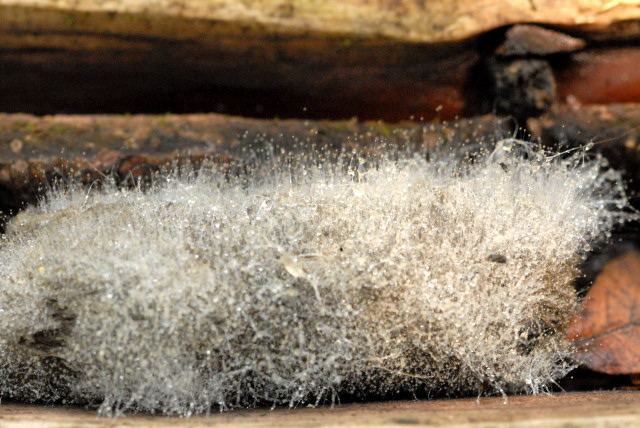
The active Mucor mold is usually white/beige or grey in color. The colonies grow and expand quickly. Colonies tend to change to grayish brown as they age due to spore development. When grown in a closed environment, it is thickly covered with small droplets of what appears to be water.
Mucor mold is found throughout the world. And, like other molds is primarily responsible for breaking down decaying materials in the ecosystem. Fortunately, it’s one of the less common mold species found indoors partially because it doesn’t thrive well in warmer temperatures.
The mold species Mucor does cause a serious infection called mucormycosis. This infection is fortunately uncommon. An infection usually develops because of some unusual circumstance that causes the fungi to come in contact with compromised or injured human tissue. If the fungi becomes established in a host, it can multiply quickly in blood vessel walls. It destroys tissue by reducing and cutting off the cell’s blood supply. By doing so, the mold makes its own nutrients through the destruction of the human tissue. If not stopped, death is the outcome.
Mucormycosis can affect many body systems including the lungs, gastrointestinal tract, mucus membranes, renal system, nervous system, and skin. Some of the symptoms of infection include:
- fever
- headache
- reddish and swollen skin over nose and sinuses
- dark scabbing in the nose by the eye(s)
- visual problems, eye(s) swelling,
- facial pain
- coughing (sometimes with bloody or dark fluid production) and shortness of breath
- diffuse abdominal pain,
- bloody and sometimes dark vomit
- swollen abdomen
- reddish/swollen skin near skin trauma, becoming ulcerated with a dark center and sharply defined edges
The symptoms of mucormycosis can be mistaken for other conditions and infections. So, often the condition is not diagnosed until it has become severe. Prompt treatment is critical. Some of the risks and complications of this infection are:
- surgical removal of dead tissue (and sometimes adjacent healthy tissue)
- blindness
- meningitis
- abscess of the brain
- hemorrhaging of the lungs and gastrointestinal tract
- secondary bacterial infection
- sepsis (blood poisoning)
- death
People with debilitating diseases that cause compromised blood flow to tissue, such as diabetes and foot ulcers are most at risk. This is because dirt and debris has easy access to the damaged cells. Individuals with burns, malignancies, auto-immune disease, splenectomy patients, and those with severe wounds are at higher risk for mucormycosis. Mucormycosis is more commonly seen in people injured as a result of natural disasters, such as flooding.
Unfortunately, once a patient is diagnosed with mucormycosis, the prognosis is only fair to poor. Estimated mortality rates are between 50-85%. And, those that do survive are often faced with disabilities such as loss of limbs.